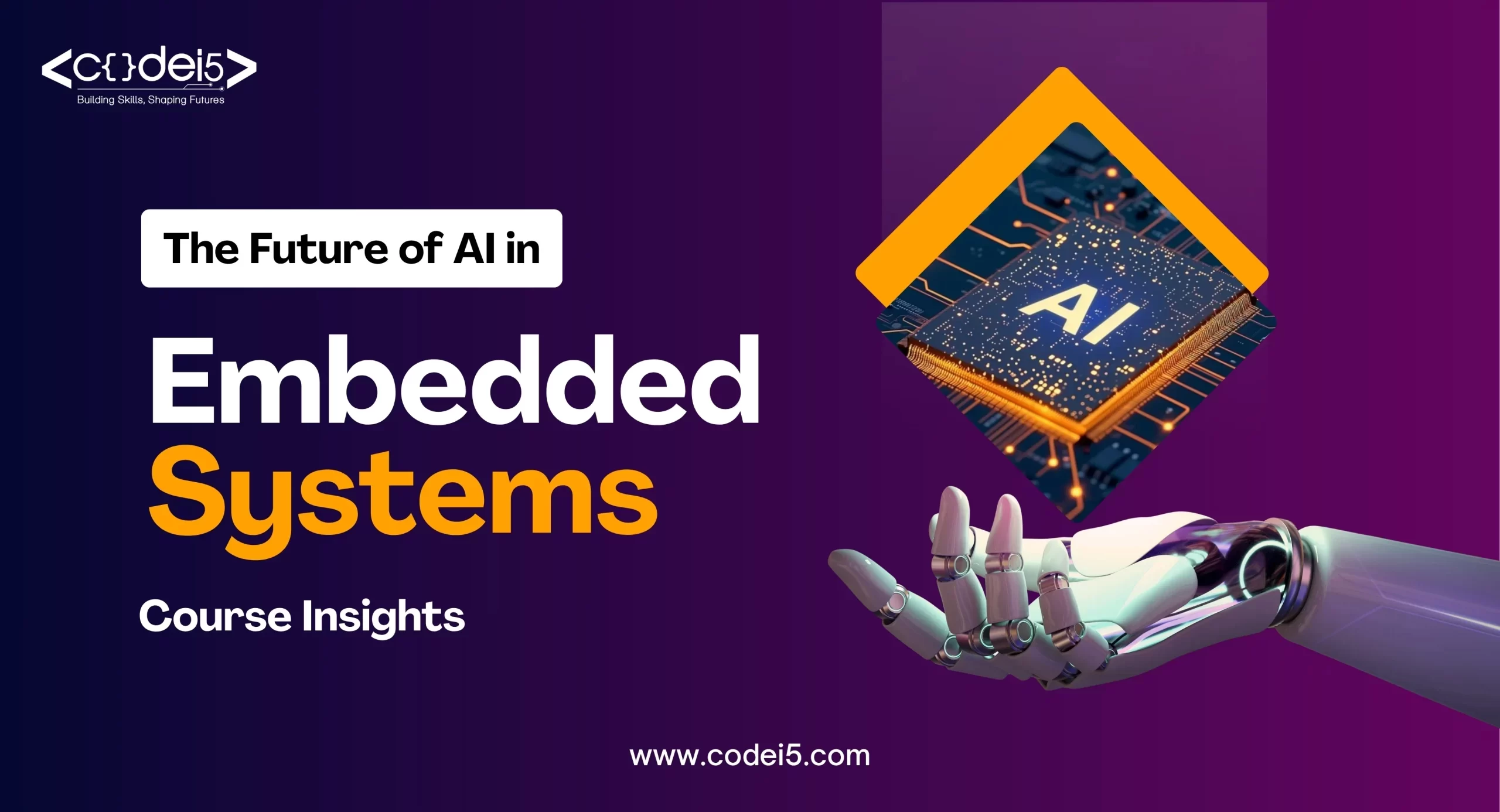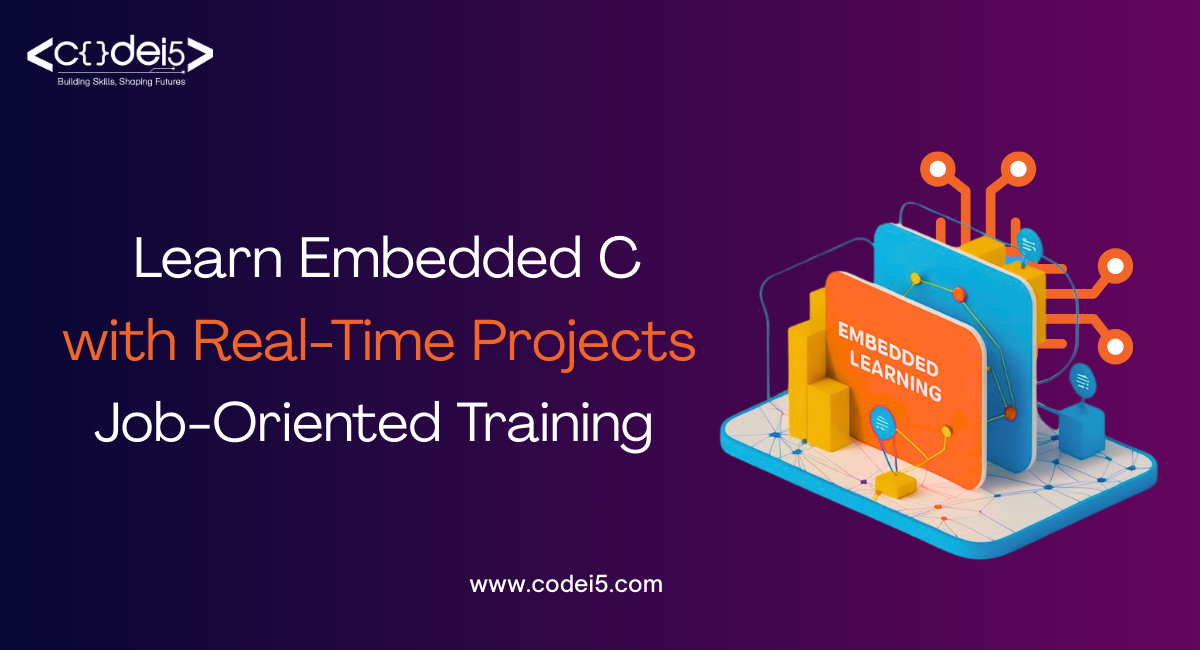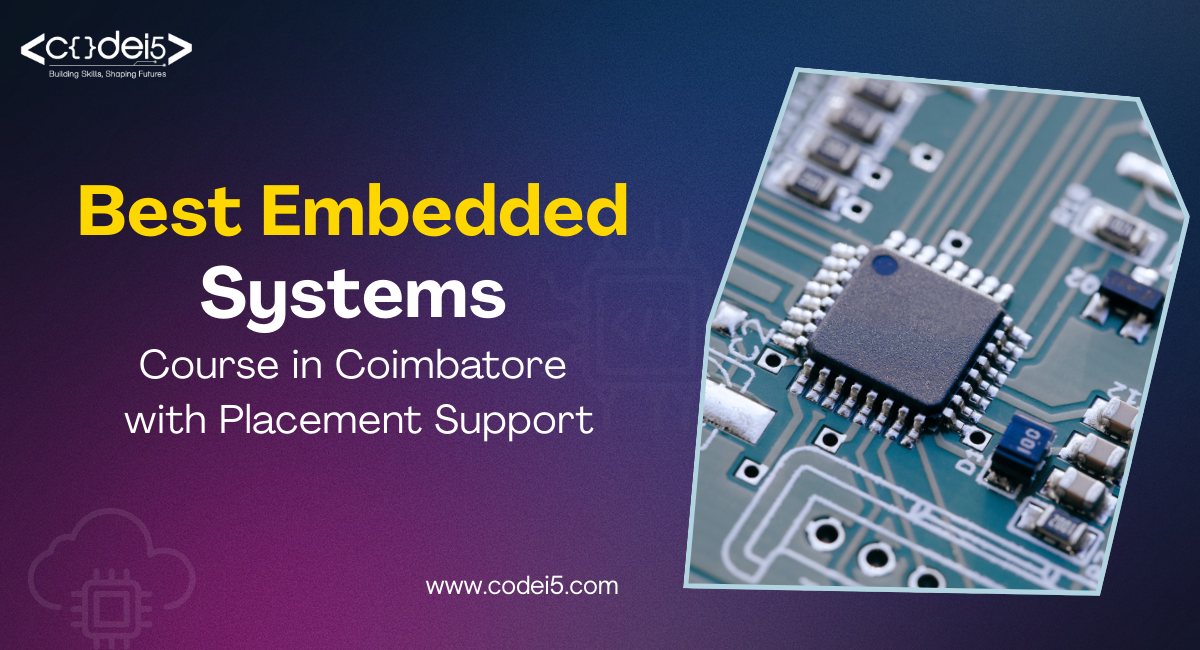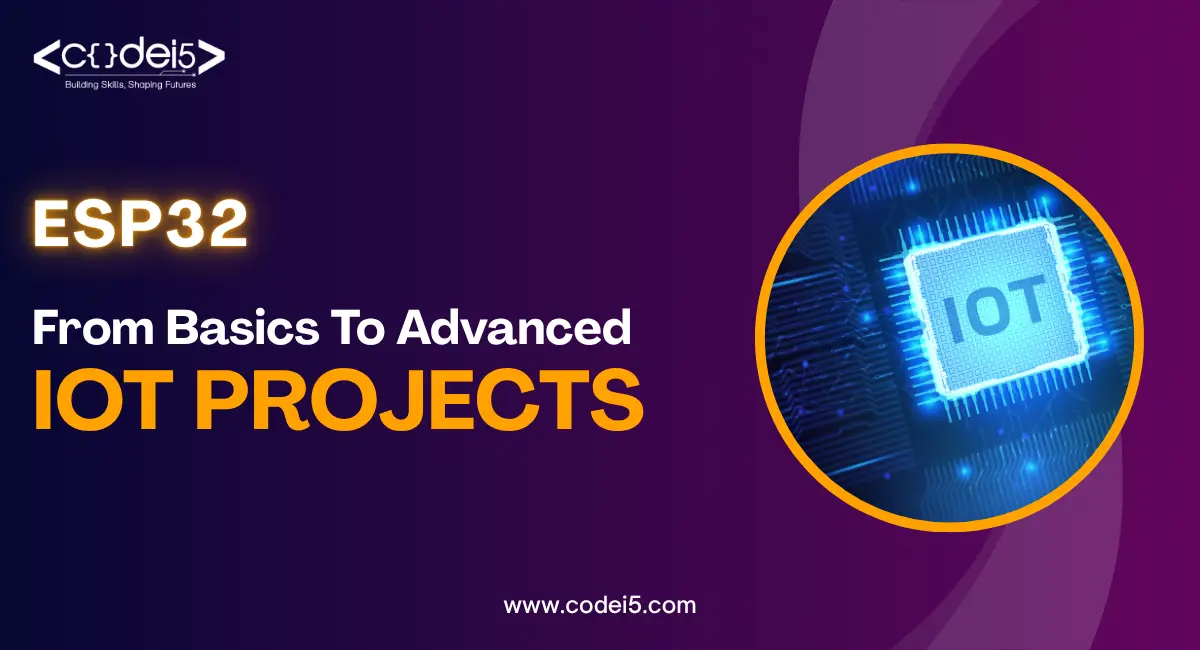
In today’s world, you can find smart devices in most segments of our lives, from our trackers to home automation systems, and the majority of smart devices and applications are powered by microcontrollers. One of the most popular microcontrollers for such an application is the ESP32, given its low cost, rich features, and both Wi-Fi and Bluetooth capabilities.
For students, beginners, or professionals interested in building their career in IoT, learning ESP32 can be a great first step. That’s why so many learners decide to undergo a professional IoT course in Coimbatore, where institutes like Codei5 offer hands-on training with real-time IoT projects. In this blog, we will uncover everything about ESP32, from basic to advanced IoT projects, and the relevance of course-based learning at the best IoT courses will change your IoT career experience forever.
What is ESP32?
The ESP32 is a low-cost, low-power microcontroller developed by Expressive Systems, which includes:
- A dual-core processor
- An integrated Wi-Fi and Bluetooth
- A multitude of GPIO pins
- Support for sensors and external modules
- Low power consumption for portable IoT devices
For this reason, ESP32 is widely used in IoT devices, wireless monitoring systems, smart appliances, automation systems, and more.
Why is ESP32 a Sensible Platform to Learn IoT Development?
The ESP32 has become the best option for IoT learners and developers because it has the following advantages:
Built-in Connectivity
The ESP32 supports built-in Wi-Fi and Bluetooth connectivity, so no external module needs to be added. This is the reason why it is so easy to set up.
Very Inexpensive
For someone who wishes to try their hand at a little IoT programming, the ESP32 lets them get started without too much worry about a costly toolset.
Large Community
There are thousands of forums, YouTube videos, and open-source software to find out some basics about the platform if you get stuck.
Flexible Usage Scopes
You can think of the ESP32 as a platform that supports many levels of complexity, starting from just blinking an LED to more complex projects like artificial intelligence and industrial automation.
Learning ESP32—Why the Need for a Professional Course
While the use of online materials will help you learn small things like writing the code to blink the LED on the ESP32, a structured IoT course delivered in person provides the opportunity to understand the overall development workflow when getting started. A professional course includes structured and
- structured hands-on practice
- industry-strength projects
- mentoring
- exposure to possibilities within a live development
These allow students in the Codei5 course to see measurable improvement more quickly and deeper confidence in doing future embedded systems work.
If you are looking for a reputable IoT course in Coimbatore, we invite you to use Codei5 for guided learning with an exposure to hands-on learning opportunities.
ESP32 Fundamentals: What You’ll Learn First ?
Before diving into advanced topics, every student will start with the basics, which are:
1. Microcontroller Introduction
Deciphering what microcontrollers do and how the ESP32 differentiates itself.
2. Programming and Setup
- Installing either the Arduino IDE or ESP-IDF
- Wire the ESP32 to a laptop
- Upload your first program
3. Simple Hardware Interfacing
- Known input and output modules such as:
- LEDs
- Push buttons
- Buzzer
- Potentiometer
4. Digital vs. Analogue Signals
Understand the difference between signals and implications on the sensors or devices.
These are basic topics to start with to build a foundation and eventually provide advanced IoT applications.
Advanced ESP32 IoT Projects
After building a strong understanding of the fundamentals, learners can move on to developing advanced IoT projects that integrate sensors, cloud systems, and analytical methods and automate decision-making. Here are some examples of a more complex ESP32 project that students will learn in the best IoT course at Codei5:
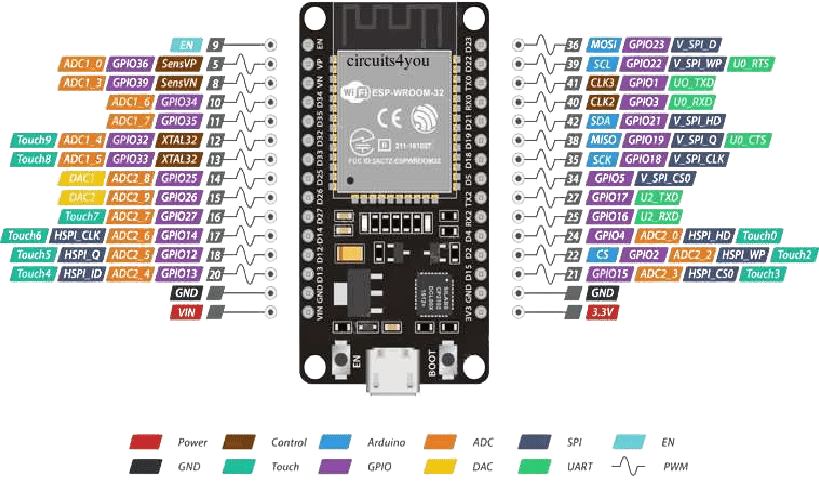
1. Smart Home Automation System
Control home appliances with a mobile app or web dashboard.
2. Smart Energy Monitoring
Monitor energy usage and send it to the cloud for tracking and alarm notifications.
3. Weather Station
- Monitor parameters such as
- Temperature
- Humidity
- Pressure
- Air Quality
Then send it to the cloud and present the data on either its own webpage or on an OLED screen.
4. Door Access With RFID
Secure entry with RFID cards.
5. Smart Irrigation System
Keep track of moisture levels in the soil and manage the on/off timing of water pumps automatically.
Projects such as these exemplify the real-world engineering capabilities of ESP32 and help students make an impactful portfolio for future potential employers.
Why Codei5 is a Good School Choice to Learn the Internet of Things?
Codei5 Academy is a great place to learn IoT and offers one of the best IoT training courses. Codei5 focuses more on the projects instead of theory and supports every student in their tasks to design, develop, and build real IoT solutions that the developers would be proud of if they were analogous to projects at companies in actual practice. The curriculum presented in the courses is always current to meet what the industry is comparing, similar skills, and technology is up to speed with what is actually happening today in developing embedded and IoT solutions.
Conclusion
Selecting a quality IoT course in Coimbatore will help students learn from beginning to end—including advanced systems using cloud technologies—with practical exposure and real-time projects. There is a huge demand for skilled IoT professionals today, making this the best time to start your journey and begin building a career in embedded systems and smart technology. To continue your foundational knowledge, you can check out our associated blog, “Learn Embedded C with Real-Time Projects—Job-Oriented Training.”


